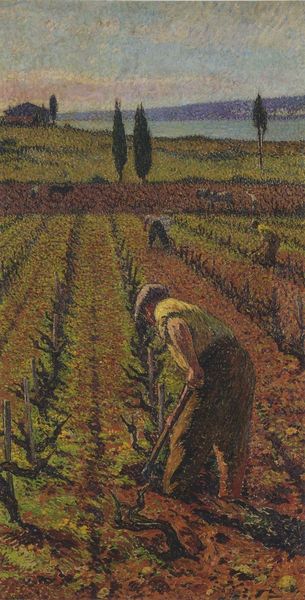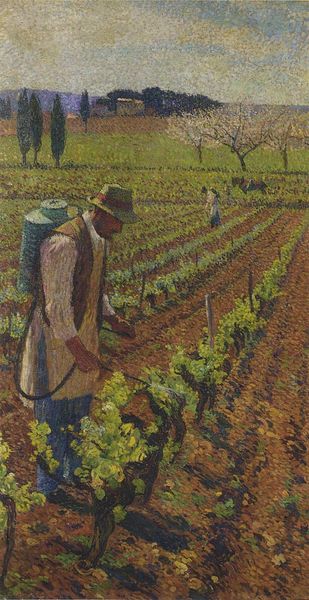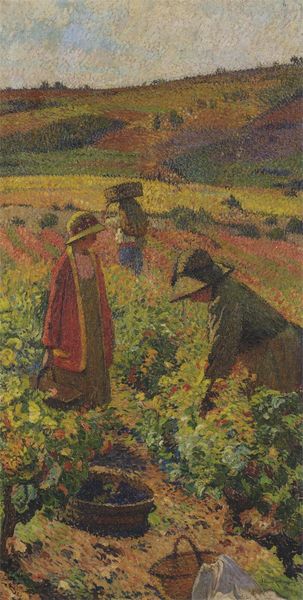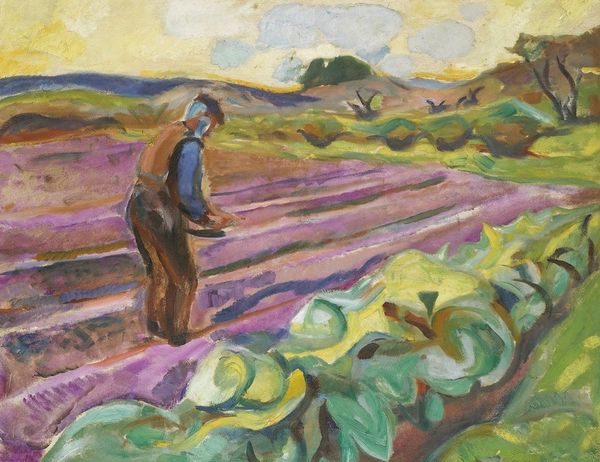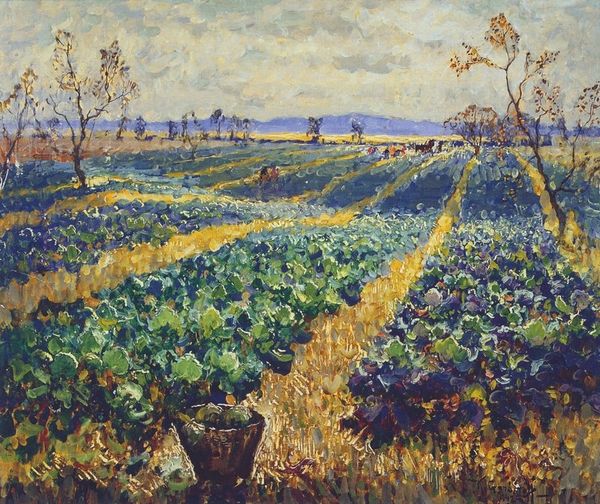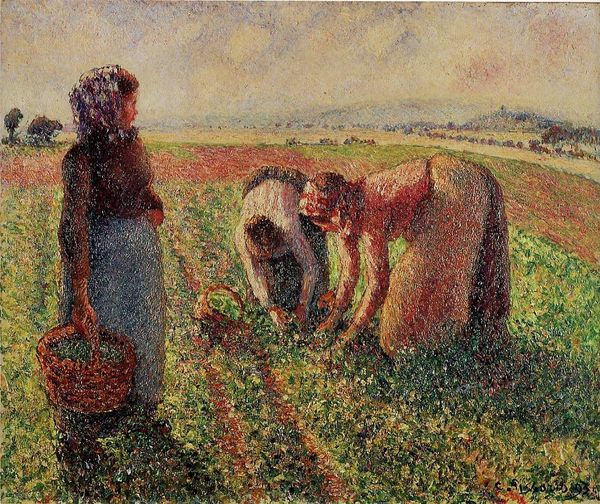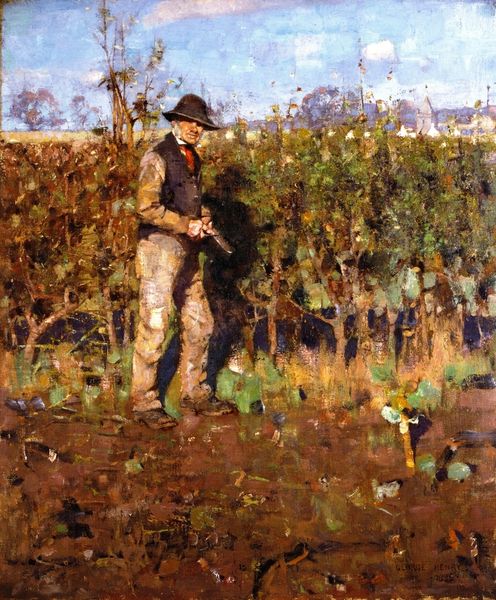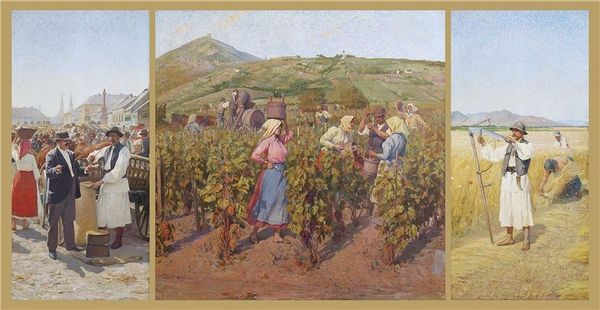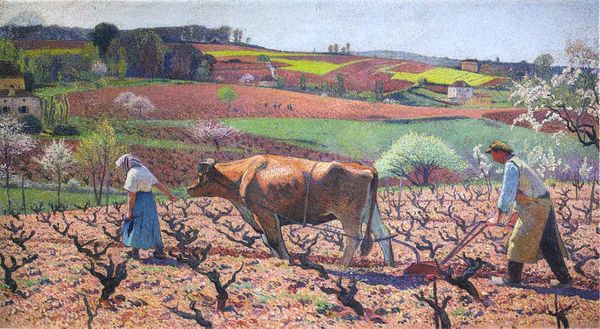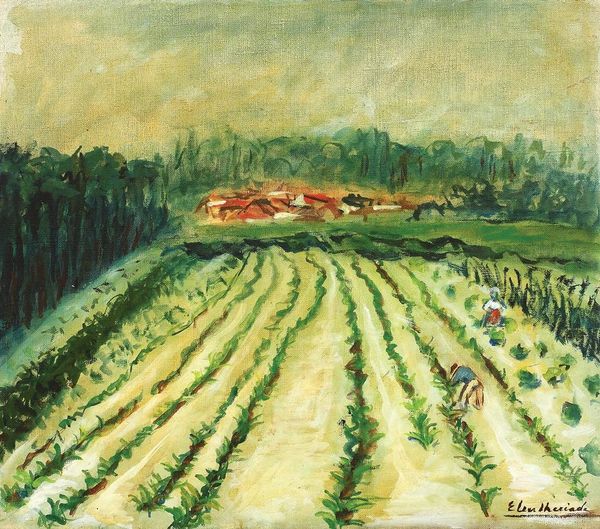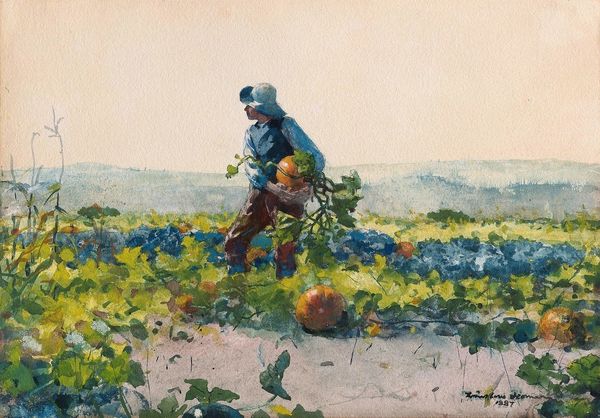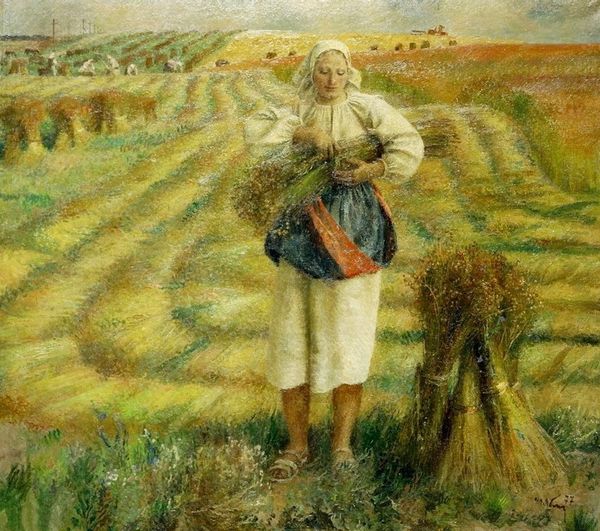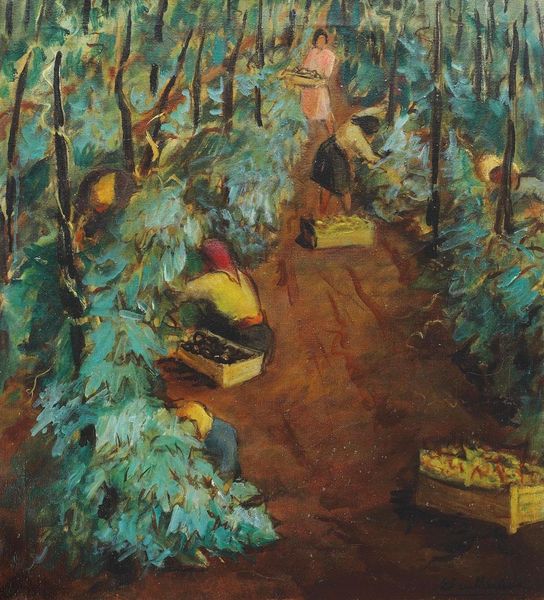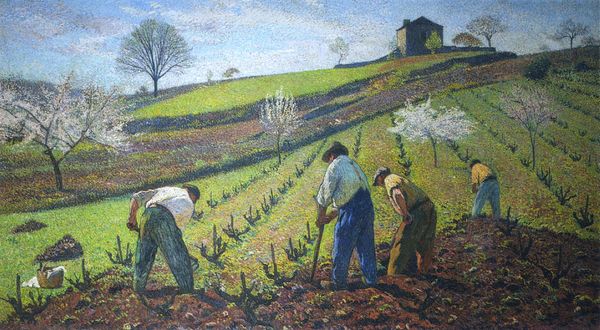
divisionism, painting, oil-paint, impasto
#
divisionism
#
portrait
#
painting
#
oil-paint
#
landscape
#
impressionist landscape
#
figuration
#
oil painting
#
impasto
#
painting painterly
#
post-impressionism
Copyright: Public domain
Editor: Looking at Henri Martin’s painting, “The Harvest,” what strikes me most is how the figures seem integrated with the landscape. It feels very grounded, a beautiful portrait capturing what appears to be laborers amongst their work. What is your reading of this work? Curator: Well, looking at this piece, I see the Post-Impressionist movement's engagement with representing modern rural life and labor. It raises questions about the idealization versus the reality of agrarian existence. Notice how the divisionist technique, with its separated strokes of color, softens any harshness? Do you think this choice aestheticizes the labor being depicted, perhaps distancing the viewer from its true difficulty? Editor: I see what you mean. It’s certainly more romantic than, say, a Realist depiction. So, in what ways would an approach like this serve socio-political purposes? Curator: In the late 19th century, rural France was undergoing significant social and economic change. Paintings like this contributed to a national discourse about the value of rural life versus increasing urbanization. It played into a construction of national identity. It's important to remember that the politics of imagery extend beyond what's immediately visible. Who gets represented, how they are represented, and who gets to view these representations all matter. Editor: That’s really interesting, the idea of national identity being tied to idealized labor. It definitely gives me a lot to think about in terms of the painting’s role within its time. Curator: Exactly. Artworks don’t exist in a vacuum; they actively participate in broader cultural and political conversations.
Comments
No comments
Be the first to comment and join the conversation on the ultimate creative platform.
